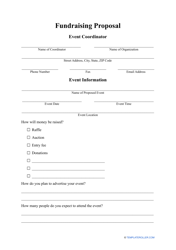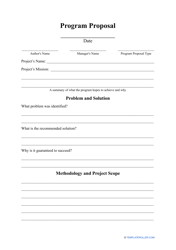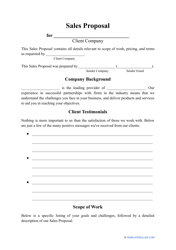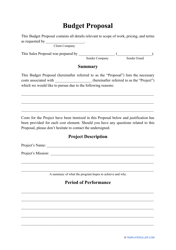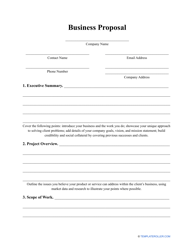How to Write a Business Proposal: Free Business Proposal Template

A Business Proposal is a written document that you send to a potential client in the hopes of winning a project that’s open for bids. Similar to an estimate, a bid, or a quote, this sales document usually includes the following key points:
- The scope of the proposed solution.
- The deliverables - either services or products - that your business volunteers to provide.
- The total value of the project and a breakdown of all associated costs.
- The completion date and detailed project timeline.
How to Pitch a Business Proposal?
Any successful proposal starts with a good pitch. Research business proposal ideas in the early stages of figuring out your course of action.
You should strive to inspire investor confidence by showing real-life business experience combined with excellent management skills. Back up your proposal with evidence of cash flow, client testimonials, and any previously-undertaken competitor research. Demonstrate your experience in the field the project is in: investors are more likely to back a bidder with experience in successfully running similar projects.
Make sure that your proposal features a realistic financial forecast. Be sensible about the revenue and growth you promise to the investors. Your profit predictions should be sensible and grounded in reality. If necessary, consider detailing three possible financial outcomes (best case, regular, and worst case scenarios) and explain the steps you would take to make the project financially worthwhile for the investors in either of these cases.
How to Start a Business Proposal?
The beginning of your proposal will have three main parts:
- An introduction.
- A table of contents.
- An executive summary.
Your introduction should familiarize your client or investor with the business your company does. Similar to a business plan overview, this section must feature all of the unique aspects of your business - its selling points - and should serve to make the reader believe that you should be selected for undertaking the job. The introduction should be comprehensive and concise - keep the text to a single page or less.
The table of contents will need to outline the sections featured in the remainder of your proposal. If you’re sending an electronic version of your document, make sure that the title of every section is clickable and lets the reader jump forward to the correct part of the proposal.
Your executive summary is where you will pitch your proposal and answer any of the questions your client may have. Use it to make an explicit case for why your business is the best choice for the client. Consider formatting this part as a FAQ by answering any of the why, when, and how questions associated with the project at hand.
What to Include in a Business Proposal?
Writing a business proposal can be made easier if you use a premade customizable proposal template. In general, any template will need to feature the following sections:
- Scope of work. This part will go in-depth about the steps you’ll take to successfully complete the project. When filling out your template, detail your approach and proposed solution, provide recommendations and give examples based on your experience. Make sure that you keep this part personal: it should feel like every individual proposal is created uniquely for the client it’s targeting.
- Deliverables. These will be unique to the project at hand, but should always include detailed descriptions, quantities, and amounts.
- Milestones. These can be added alongside the deliverables or a separate section. Set a delivery date for every individual component or divide your project into larger phases. Either way, listing specific milestones will help you come across as responsible and organized.
- Finances. The section dedicated to the project’s budget is an integral part of the business proposal format. Prepare your pricing strategy in advance and be sure to do your research when it comes to working with third-party contractors, vendors, or suppliers.
How to Present a Business Proposal?
The key to a great proposal presentation is being professional, concise, and getting straight to the point. Avoiding a long introduction will show your client that you value their time. Try to address your main selling point within the first minutes of your speech.
Break the monotony of your presentation by asking your client informational questions. This will make sure that you’re on the same page and will bring their attention back to you if they’ve lost interest. Here are a few examples of the questions you can ask:
- What is a major challenge your business is currently facing?
- Have you tried this approach before?
- What numbers are you looking to achieve by the end of this year?
Incorporate pictures and opt out of using detailed charts and graphs. Keep all of the data-heavy graphics to your actual proposal and make your presentation captivating and impactful.
How to Respond to a Business Proposal?
If you want to accept a proposal that was sent to you by a potential partner, you will need to respond with a formal proposal acceptance email. The letter will serve as legal proof of you accepting the proposal and will hold up in court if things go awry.
Here’s how to write an email accepting a simple business proposal:
- Write the email using your company’s official header, letterhead, or background. The letterhead should specify the full legal address of your company along with any other important identifying details.
- Address your recipient by their name. At this stage of the process, vaguely addressing your recipient (e.g., “To whom it may concern”) will be considered severely inappropriate.
- Include some words of adulation. Regardless of you accepting or declining the proposal, you have to take the time to thank the reader for their time and effort. Make it personal and sincere: this is standard practice for any business and will help you build rapport with the businesses around you.
Related Topics:

